When growing peppers, gardeners are faced with the fact that seedlings are sometimes sick. The disease can affect the quality of the future crop and even completely destroy it. Therefore, when growing crops, you need to take varieties that are resistant to viral diseases. They are suitable for open ground and greenhouses, and the plants themselves grow strong and bear fruit well in the future.
Pound
Semi-determinant plants are designed for growing outdoors and for greenhouses. The bushes are compact, on the site they do not take up much space, their height is 50-70 cm. A lot of leaves are formed. From the time of sowing seeds to harvest takes from 110 to 120 days. Peppers are formed actively, biological maturity occurs after 10-15 days. The variety is resistant to verticillin wilt, tobacco mosaic virus, and other viral diseases.
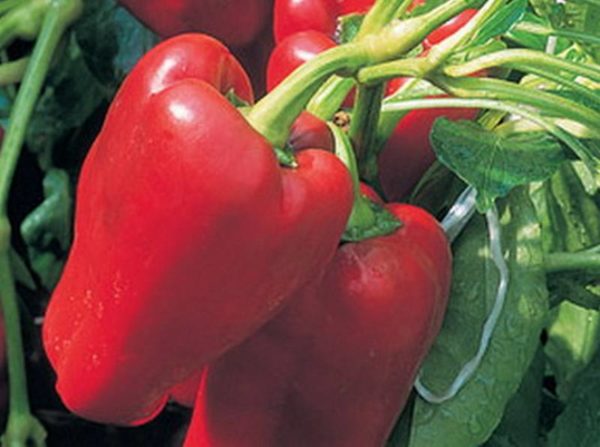
Peppers with a jagged prism shape and smooth edges. Weight is from 140 to 170 g, height 12-14 cm. The thickness of the skin is not more than 7 mm. On each bush at the same time about 12-18 fruits ripen. The skin during biological maturity turns bright red with a glossy tint. The main purpose of the fruit is processing and fresh consumption. Vegetables are suitable for long-term storage.
The advantages of Funtik are as follows:
- the possibility of street landing;
- unpretentiousness in cultivation;
- compact bushes;
- early ripening of the crop;
- high resistance to viral infections.
Due to the abundant foliage of the bushes, when planting, it is recommended that the distance from the neighboring plant is at least 40 cm. The planting density is no more than 5 bushes per sq.m
Pinocchio
Easy-to-breed varieties of gardeners recognize the Pinocchio hybrid. The plant does not require pinching, since it grows in 2-3 stems, little stepsons. The maximum height of the bush is 90-100 cm with greenhouse cultivation, the garter is optional. In street soil, the variety can be grown, but peppers will ripen longer for 2-3 weeks. In closed ground, maturity occurs after 90 days from the start of seedling cultivation. The yield of the variety, subject to agricultural technology, is impressive: about 10-13 kg per bush.
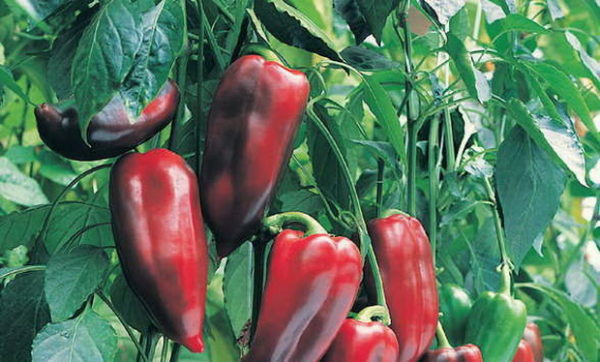
The taste qualities of peppers are high: the sweetish pulp is successfully used for the preparation of salads, lecho, ketchups. The skin color is bright red. On each bush, 13-15 ovaries are formed. The weight of one pepper is 100-120 g, length - 10 cm. The skin is thin, 4-6 mm. Pinocchio has many positive qualities:
- resistance to cold;
- good immunity;
- drought tolerance;
- attractive appearance;
- long shelf life.
Varieties have no flaws. Pinocchio successfully grow thousands of gardeners throughout Russia, Ukraine, Belarus.
Chord
For greenhouse cultivation, the Accord variety is excellent. It differs in the mid-early ripening period, gives fruit already 70 days after planting. In the street land Accord can be grown in the south, plants do not like climate change. The variety is considered a hybrid, has strong immune resistance, is not affected by diseases and pests inherent in the culture. The yield is stable - 7-8 kg of fruit per planting meter. The bushes are neat but powerful, the stem length does not exceed 60 cm. You do not need to tie the bush.
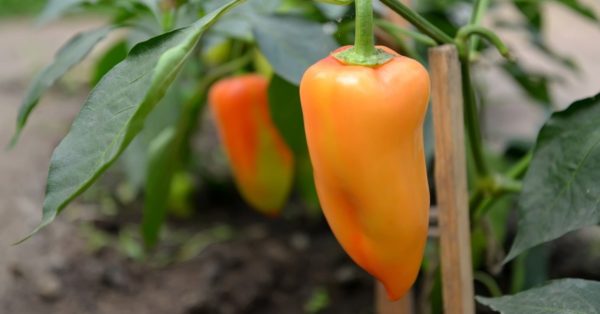
Peppers develop quickly, their length is 10-11 cm. One pepper weighs 130-160 g, the color changes from beige to orange-red. The shape is conical, without ribbing. Peppers are suitable for stuffing and making lecho.Fruits are also suitable for fresh consumption, as they have a juicy sweetish flavor. The advantages of the Chord are:
- fast ripening;
- universal purpose;
- good yield;
- resistance to viruses.
Gardeners note that the hybrid needs high temperature when grown. It should not be below 22 degrees. The daylight hours for seedlings should be at least 14 hours, so in the spring the plants must be additionally illuminated with lamps.
Red Bull
For lovers of large peppers, agronomists brought variety Red bull. Bushes are spreading, resistant to low temperatures and viral diseases. The variety is suitable for planting on the street, but can be successfully grown in greenhouse soil. Red bull is a hybrid with a medium early ripening period. Harvested 115 days after emergence. The yield is 10-12 kg of peppers per planting meter.
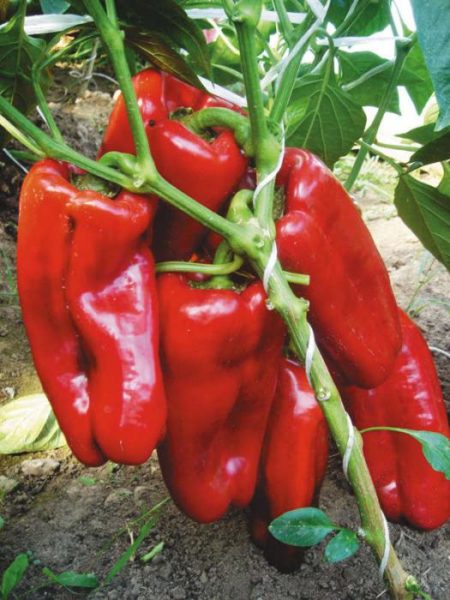
A feature of the hybrid is its gigantic size peppers. The skin of the peppers is bright red in color, moderately thick, durable. Fruits can be stored for a long time. They have a wonderful sweet taste, and the pulp contains a lot of juice. In length, the fruits grow to 20 cm, weigh 200 g each. Mistresses use vegetables for harvesting: for ketchups, lecho, snacks.
The advantages of the Red Bull are:
- large vegetables with a good taste;
- resistance to diseases and pests;
- high productivity;
- keeping up.
The variety is demanding on the cultivated soil and responds well to top dressing. It is recommended to use mineral and organic fertilizers.
cabin boy
Determinant bushes half a meter high, are compact and do not take up much space in the garden. Plants can be planted with a density of 5-6 bushes per 1 sq.m, they do not interfere with each other's development. Minimal care - no need for garter and pinching. The variety grows well in street soil, planting under the film is possible. The stage of technical ripeness occurs after 105-110 days from sowing seeds to seedlings. After a week, the peppers begin to reach a red color. From 8 to 15 vegetables are formed on the bush.
You can enjoy the taste of peppers from the second half of summer. The fruits ripen very appetizing: the red glossy skin glistens in the sun. The shape is conical, slightly ribbed. The thickness of the pericarp is 5-7 mm, the weight of the pepper is 150 g. The taste is sweet, without sourness, the pulp is juicy. Jung is grown for fresh consumption, used in harvesting and for stuffing. The advantages of the culture are presented below:
- small bushes;
- minimal care;
- excellent taste;
- resistance to diseases and pests.
During the cultivation of Yunga, there were no shortcomings, he occupies a leading position in the agricultural market.
Czardas
In open ground in Central Russia you can grow a variety of Chardash. It is considered early ripening, as it takes about 120 days to mature. The bushes are low, not more than 60 cm. Garter to the support is not needed, since the stem is thick. The stepson formation of the plant is moderate, so you can not form. In season, up to 10 kg of fruit can be collected from one planting meter. Chardash is not susceptible to the tobacco mosaic virus, is not infected with verticillosis and other diseases.
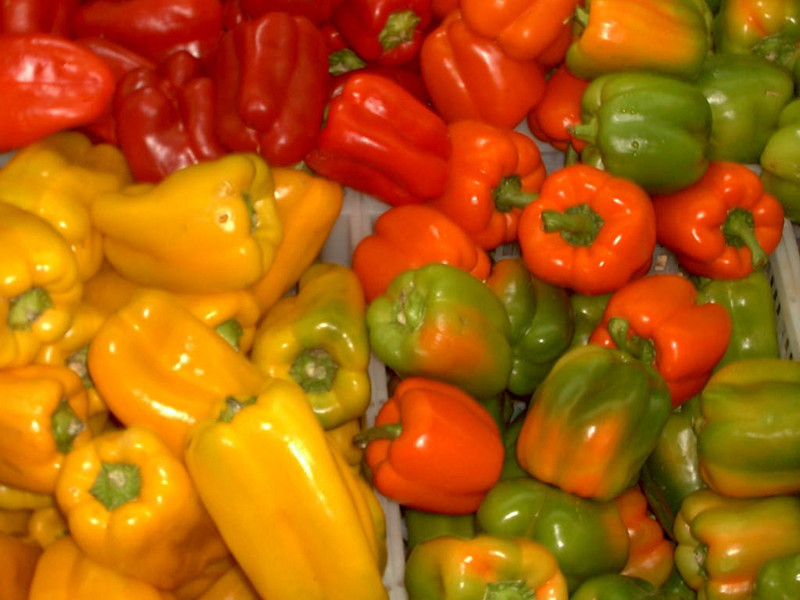 You may be interested in:
You may be interested in:Cone peppers at the stage of biological maturity take a red burgundy color. The skin is moderately thin, about 6 mm. The fruits are quite large, weighing 200-250 g. They are grown for fresh consumption and for conservation.Chardash can be stored for a long time, peppers survive even long transportation without problems. The advantages of Chardash are called:
- marketability;
- resistance to low temperatures;
- good immune ability;
- unpretentiousness in cultivation.
Sometimes peppers only reach a yellow-orange color, which does not turn red.
Actor
The variety Lycedea belongs to a productive variety. Plants quickly reach technical maturity in 90-100 days. The height of the bushes is from 90 to 15 cm, a garter to the support is recommended. Shoots and leaves are densely arranged. The variety is characterized by a high yield indicator - 11 kg per sq.m, the load on the bush is high - 25-30 fruits per plant. Lyceum is not affected by the tobacco mosaic virus, verticillosis. The culture is grown both in greenhouses and on the street, and Lyceum is not whimsical to the growing conditions.
The fruits have a conical elongated shape and three chambers. The length of the pepper is from 15 to 20 cm. The taste of the skin is sweet, very juicy and fragrant. The color changes as ripeness reaches from light green to rich red. The fruits are attractive, weighing 250 g, with a wall thickness of 5-6 mm. Lyceum is a variety of salad and canning purposes. Lyceum has a number of positive qualities:
- unpretentious care;
- stable rate of productivity;
- good immunity;
- appetizing regular shape.
The disadvantages of the variety include the height of the bushes, they take up a lot of space on the site. Planting density should not exceed 3-4 plants per square meter.
Bagration
For greenhouse planting, gardeners prefer the Bagration variety. This is a mid-early variety with a ripening period of 3.5 months. Semi-determinant bushes in growth slightly exceed a meter mark, no more. Garter is recommended. Bagration is resistant to tobacco mosaic virus, vertebral rot and verticillin wilt. Productivity, subject to the correct agricultural cultivation technique, is at least 10 kg per sq. M.
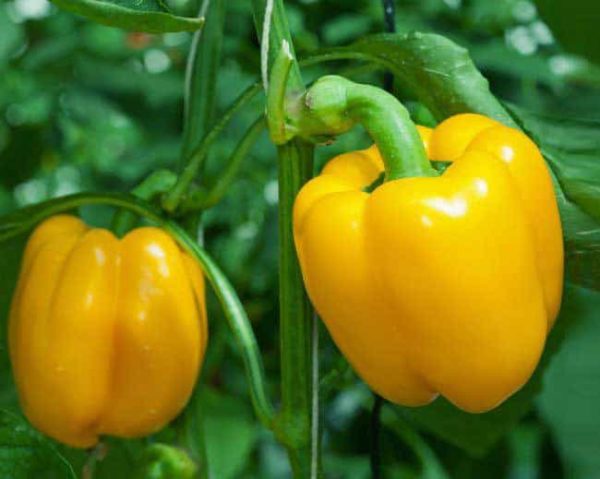
During biological maturation, the green color turns yellow. The fruits are large, have a delicious cuboid shape. The weight of the pepper is about 200 g, the wall thickness is 6-8 mm. Bagration is grown for fresh consumption, as well as for canning. Among the positive qualities Bagration noted:
- high yield;
- good taste;
- resistance to viral infections;
- commodity form.
Variety has one drawback - fear of cooling. In the middle lane and in the Urals, agronomists recommend growing the crop only in protected ground. In the south, landing in open ground is possible.
Nafanya
Nafanya variety has excellent immune characteristics. It is grown in open ground even in the Middle lane and in the Urals, plants grow without any problems, tolerate small cold spells and are resistant to fungal spores and viral diseases. The height of the adult bush is moderate, 60-70 cm. The fruiting period is slightly stretched, which allows you to harvest until the frost, almost until mid-autumn. The yield is stable - not less than 8 kg per square meter, the number of fruits on one bush is 14-18 pieces.
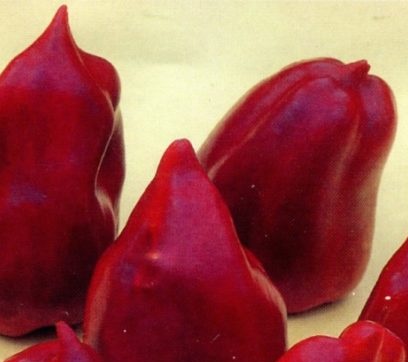
The fruit has a dark red color with a glossy tint. Each pepper weighs 180 g, it tastes sweet and pleasant. The shape is conical, the tip of the pepper is slightly pointed. There is no curvature; vegetables have a presentation, therefore they are often grown for sale. They grow a culture to eat just like that, from the garden, but can be used for cooking lecho and other snacks. The advantages of Nafani are:
- great taste;
- long keeping time;
- attractive appearance;
- disease resistance.
The variety has no drawbacks, agronomists and gardeners recommend it for cultivation even for beginners, since there will be no problems with it.
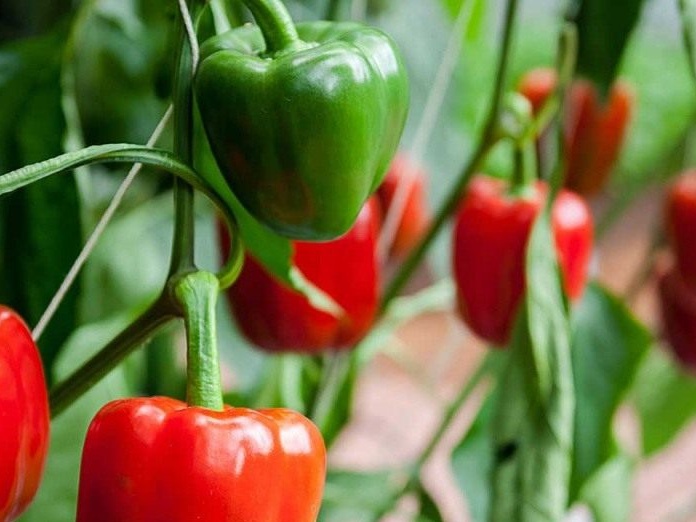 You may be interested in:
You may be interested in:When planting peppers, they necessarily treat the soil and seeds from possible bacteria and viruses. Even when growing disease-resistant varieties, preventive measures should not be neglected. At least 2 times a season, the seedlings are sprayed with fungicidal preparations or folk remedies, they will help strengthen the immune qualities of plants and reduce the likelihood of infection to zero.

 Calorie pepper stuffed with meat and rice - BZHU per 100 grams
Calorie pepper stuffed with meat and rice - BZHU per 100 grams Gorky pepper - the best varieties for open ground
Gorky pepper - the best varieties for open ground Hot pepper seeds - the best varieties for open ground and reviews
Hot pepper seeds - the best varieties for open ground and reviews Capsicum tincture for hair - how to use and reviews
Capsicum tincture for hair - how to use and reviews